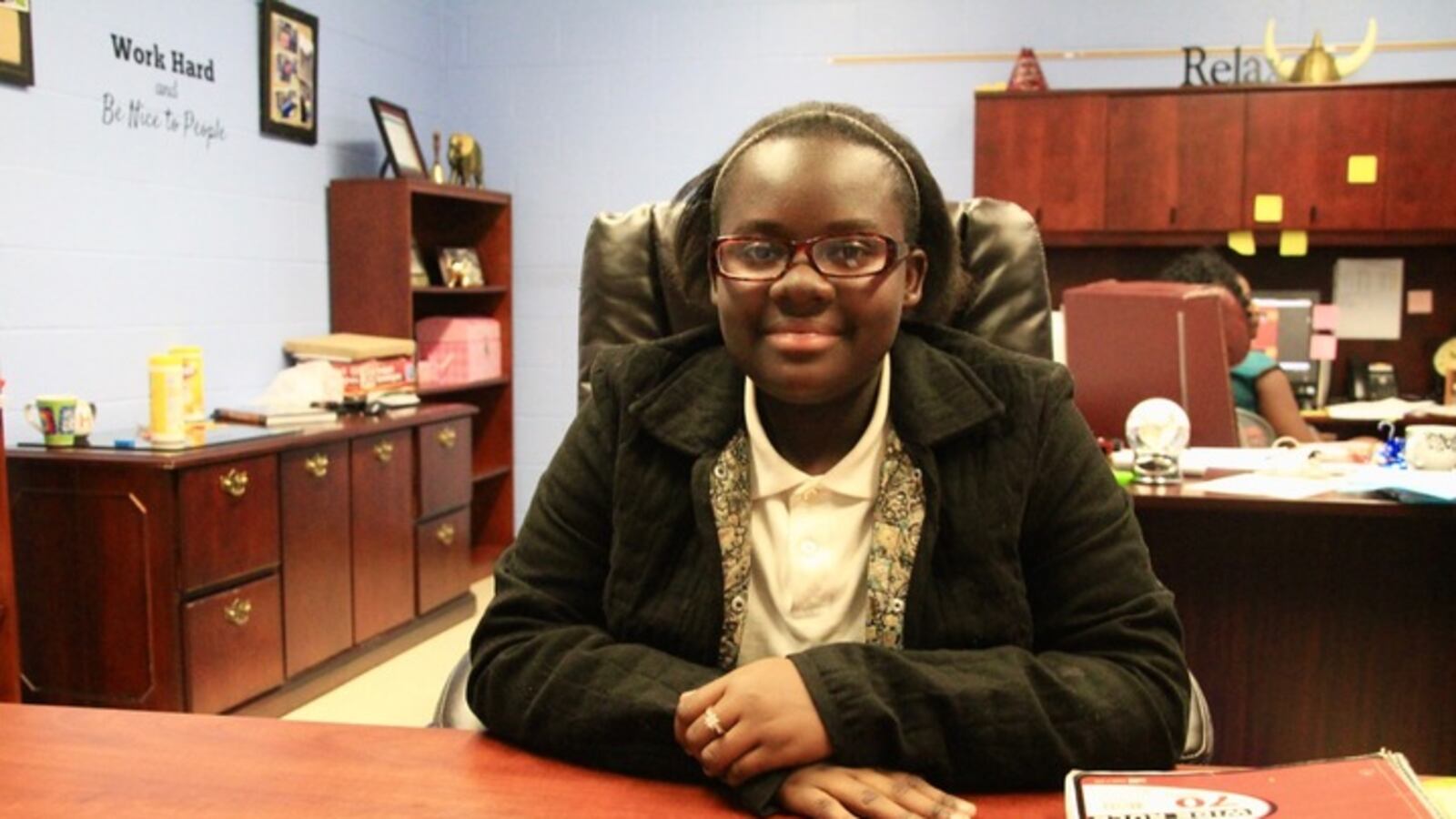LaTonja Boyce knows the challenges of getting to school when the odds are stacked against you. An eighth-grader at Riverview School in Memphis, she’s moved a lot — from home to home and family member to family member — without the structure, resources and guidance needed to get to school every day and on time.
“Going to school isn’t always like the cool thing to do or what you see other kids on your street doing,” says LaTonja, 13, who now lives with a grandmother while her siblings are in foster care. “But I’ve had teachers make me want to come. I know they will check on me if I’m not there … and they explain why (education) is important for your future.”
LaTonja’s story isn’t unique. High rates of mobility and poverty are among hurdles that stand in the way of getting to school in Memphis, where chronic absenteeism is a major challenge.
Last school year, 29,000 students in Shelby County Schools missed 18 or more school days. And it’s worse for Tennessee students living in poor neighborhoods. Those considered economically disadvantaged are three times more likely to be chronically absent, according to a state report released this year.
For students who defy the odds, encouragement from a teacher or mentor is a common theme.
Sixth-grader Miranda Moore began attending Riverview when her school, Lincoln Elementary, was closed by the district in 2015. It was hard coming to class when she felt behind the other students, but encouragement and attention from teachers made a huge difference.
“Whenever I feel like I’m not getting something, I like it when teachers break us up into groups and have us help each other put what the teacher is saying into our own words,” Miranda says. “When students feel like they can’t catch up because they’re new or they’ve missed a lot or whatever, some just stop trying.”
This month, to highlight the importance of school attendance, Shelby County Schools launched an attendance campaign in partnership with the Memphis Grizzlies NBA team to incentivize students to show up. The focus is on 10 schools that had 10 percent of last year’s most-absent students.
Riverview wasn’t among schools targeted by this year’s campaign, partly because the K-8 school in south Memphis has made strides in recent years to curb attendance woes. Principal Latasha Harris credits a revamped school culture and increased communication with parents, many of whom live in some of the city’s poorest neighborhoods.
Last year, before the first school bell even sounded, Riverview employees called parents’ phones and knocked on relatives’ doors to make sure students started the school year strong. It worked, with most students registered by the first day of school.
Riverview educators made a similar push this year, and took it a step further by throwing a “block party” in early August to get families on the school campus and get students registered.
Despite making strides with middle schoolers, Riverview has struggled with elementary attendance, prompting Harris to enlist the help of Communities in Schools, a nonprofit partner in a national dropout prevention program.
“We have a site director (from Communities in Schools) here every day, and one of her sole priorities is attendance,” Harris said. “Having someone to meet with parents and understand why they might be struggling to get their kids to school, that’s huge. It’s been extremely helpful.”
In meetings with parents, Riverview leaders learned about the need for a uniform closet, which the school established at the front office so students can access clothing if they don’t have a clean uniform.
"When students feel like they can’t catch up because they’re new or they’ve missed a lot or whatever, some just stop trying."
Miranda Moore, student
“We found that students were missing school because they didn’t have the right thing to wear, or their uniform was dirty, and they were getting called out on it in class,” Harris said. “So now we have this closet with everything you can think of — from shirts to underwear.”
Relationships go a long way in connecting students to school life, so Harris coaches her teachers to nurture a caring environment.
Jerreca Saulsberry, a third-grade math and science teacher, agrees. She says the No. 1 reason that students struggle to come to school consistently is an unstable home environment.
“I grew up in this area and had a similar childhood to many of the kids in my classroom,” Saulsberry said. “For me, teachers in school were always my safe haven. That made me want to show up. I wanted to come back to teach to create same environment.”

